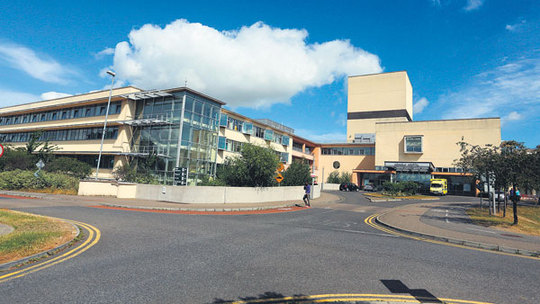LAST week’s decision to relocate the Rotunda to Connolly Hospital in Blanchardstown has given fresh hope to campaigners calling for the new children’s hospital to be built there too.
The Rotunda move to Blanchardstown is part of a Department of Health plan to partner the city’s maternity hospitals with adult acute hospitals.
It follows the Government’s decision to develop the new children’s hospital at the St James’s campus and the need to have a maternity hospital on that site.
However, the St James’s Children’s Hospital plan still has to go before An Bord Pleanala, and campaigners calling for it to be built in Blanchardstown believe it could be rejected.
The children’s hospital was originally earmarked to be built on the site of the Mater but that plan was scuppered after it was turned down by the planning board on grounds of scale and density.
Those in favour of building it in Dublin 15 say Connolly has several advantages over St James’s, including 89 acres of State owned land on the adjoining National Sports Campus.
An assessment of a proposal put forward by Connolly Hospital and Fingal County Council after the Mater site was ruled out found virtually no weaknesses in the plan.
The assessment was contained in the Dolphin Report – a review of all proposals for the new children’s hospital – that also highlighted several concerns about the St James’s Hospital proposal, which was eventually chosen.
The report found that St James’s best met the criteria for the children’s hospital from a clinical and academic perspective. However, it also noted that the 89 acre site proposed by Connolly Hospital had practically limitless scope for future expansion and that access by car was excellent.
Jonathan Irwin, CEO and founder of the Jack & Jill Children’s Foundation, says last week’s confirmation of the Rotunda to Connolly move presented a major opportunity that couldn’t be disregarded.
“The powers-that-be simply cannot ignore how this makes Connolly a far superior location, making tri-location a reality in terms of maternity, children and adult services and specialties in one campus,
? he continued.
“Furthermore, there is no scientific evidence to back up repeated claims that the clinical outcomes for the children would be much improved if the children’s hospital is built next to James’s, or next to any adult hospital for that matter.
?
Irwin, whose comments are endorsed by the New Children’s Hospital Alliance group of health professionals and parents, said that the lodgment of planning permission for St James’s shouldn’t mean it was a
‘done deal’.
“We want to give our children the best possible chance of survival and the best medical attention, and ruling out the need to ambulance them from one site to another will save lives,
? he added.
Under current plans Connolly Hospital will be one of two
‘satellite centres’ for the new children’s hospital but Irwin believes this can be easily changed.
“Blanchardstown is already deemed a satellite site, so why not just switch this satellite status with St James’s?
? he asked.
Local councilor, David McGuinness (Ind), described news that the Rotunda was moving to Connolly as
“excellent’ and added his voice to calls to reconsider the Dublin 15 site for the children’s hospital.
“This confirms the need to review the children’s hospital location given Blanchardstown holding public confidence on this topic,
? he said.
“Connolly would have lost out because it didn’t have a maternity hospital and I just think if St James’s doesn’t get the planning permission it’s game on again for Connolly Hospital.
“It’s not that I hope the project is stalled, but I actually think the people of this country don’t believe St James’s is the appropriate site for the children’s hospital.
?
Local residents living close to St James’s have raised objections to locating the children’s hospital there. At a meeting last month organised by the New Children’s Hospital Alliance, representatives from local groups expressed fears over a dramatic increase in traffic congestion, parking problems and pollution in the area as well as subsidence in homes close to the site.
